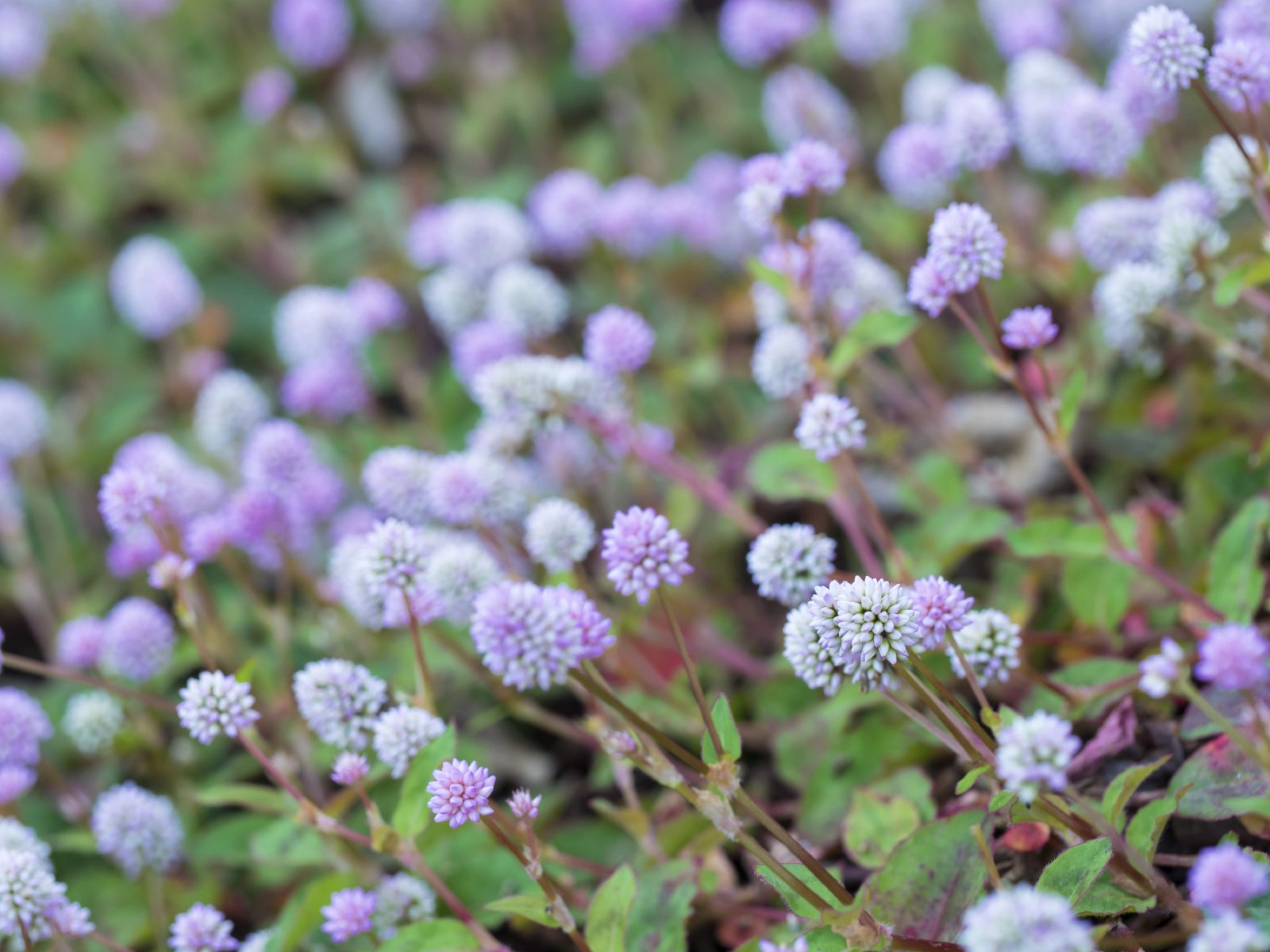Pink Knotweed Uses: Where Can You Grow Pinkhead Knotweed


Pinkhead knotweed plants (Polygonum capitatum or Persicaria capitata) are considered excellent low-growing groundcover by some gardeners. They are also called invasive pests by others. If you read up on pink knotweed information, you’ll find that the plant is banned in England and considered invasive in California. This is because of its tendency to spread where it wasn’t invited. So can you grow pinkhead knotweed, or should you? Read on for more pink knotweed information.
Pink Knotweed Information
What is pink knotweed? It’s a tough plant that stays under 6 inches (15 cm.) tall but spreads horizontally to up to 5 feet (1.5 m.). It thrives in almost any soil, including dry and sandy soil, and grows in both sun and partial shade in U.S. Department of Agriculture plant hardiness zones 8 through 11. The lance-shaped leaves of the pinkhead knotweed plants are between 2 and 11 inches (5-28 cm.) long, edged with dark red, and marked with burgundy chevrons. The leaves grow on prostrate red stems that root at the nodes. In mild regions, the leaves are evergreen, staying on the plant all year long. The pink pompom flowers, each about 2 inches (5 cm.) long, bloom from spring through the first freeze. They cluster in globe-shaped flower spikes above the foliage. Another way to answer the question “What is pink knotwood?” is to call it a cousin of Japanese knotweed. It lacks the exotic beauty of Japanese knotwood, but still looks appealing growing in the backyard as groundcover.
Where Can You Grow Pink Knotweed?
Groundcover is only one of the many potential pink knotweed uses for those choosing to grow the plant. You can also use pink knotweed in potted arrangements, grow them in baskets, or use them as edging in a border. The plant looks especially lovely in raised beds or containers where it can spill over the edges (and control its spread). Pinkhead knotweed plants are easy to grow in your garden or backyard. If you live in a region with a long growing season, start the seeds outdoors in weed-free soil once the risk of frost is passed. In areas with short growing seasons, start them indoors. Fill small pots with good seed-starting soil. Moisten the soil and press in the seeds. Keep the soil moist until you see the seeds sprout. If you start them inside, harden off the young plants for at least 10 days before you transplant them outdoors.
Sign up for the Gardening Know How newsletter today and receive a free copy of our e-book "How to Grow Delicious Tomatoes".

Teo Spengler is a master gardener and a docent at the San Francisco Botanical Garden, where she hosts public tours. She has studied horticulture and written about nature, trees, plants, and gardening for more than two decades, following a career as an attorney and legal writer. Her extended family includes some 30 houseplants and hundreds of outdoor plants, including 250 trees, which are her main passion. Spengler currently splits her life between San Francisco and the French Basque Country, though she was raised in Alaska, giving her experience of gardening in a range of climates.